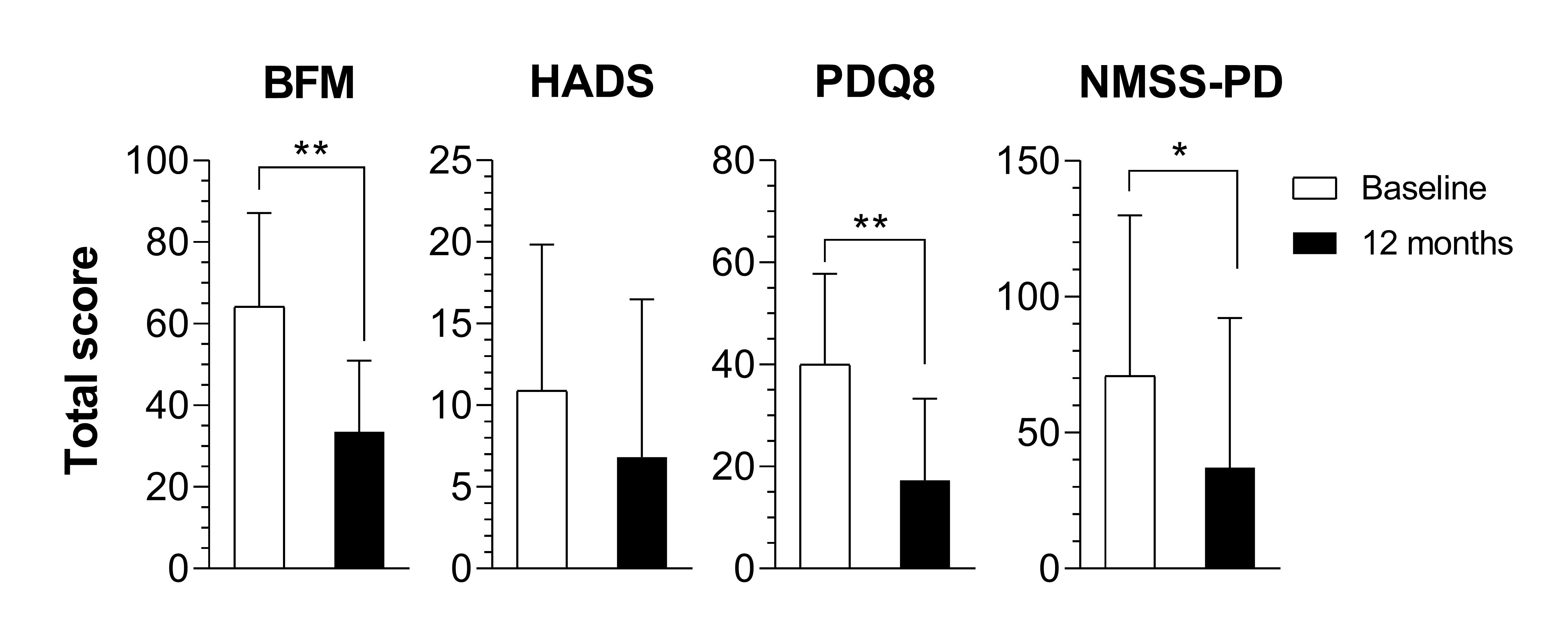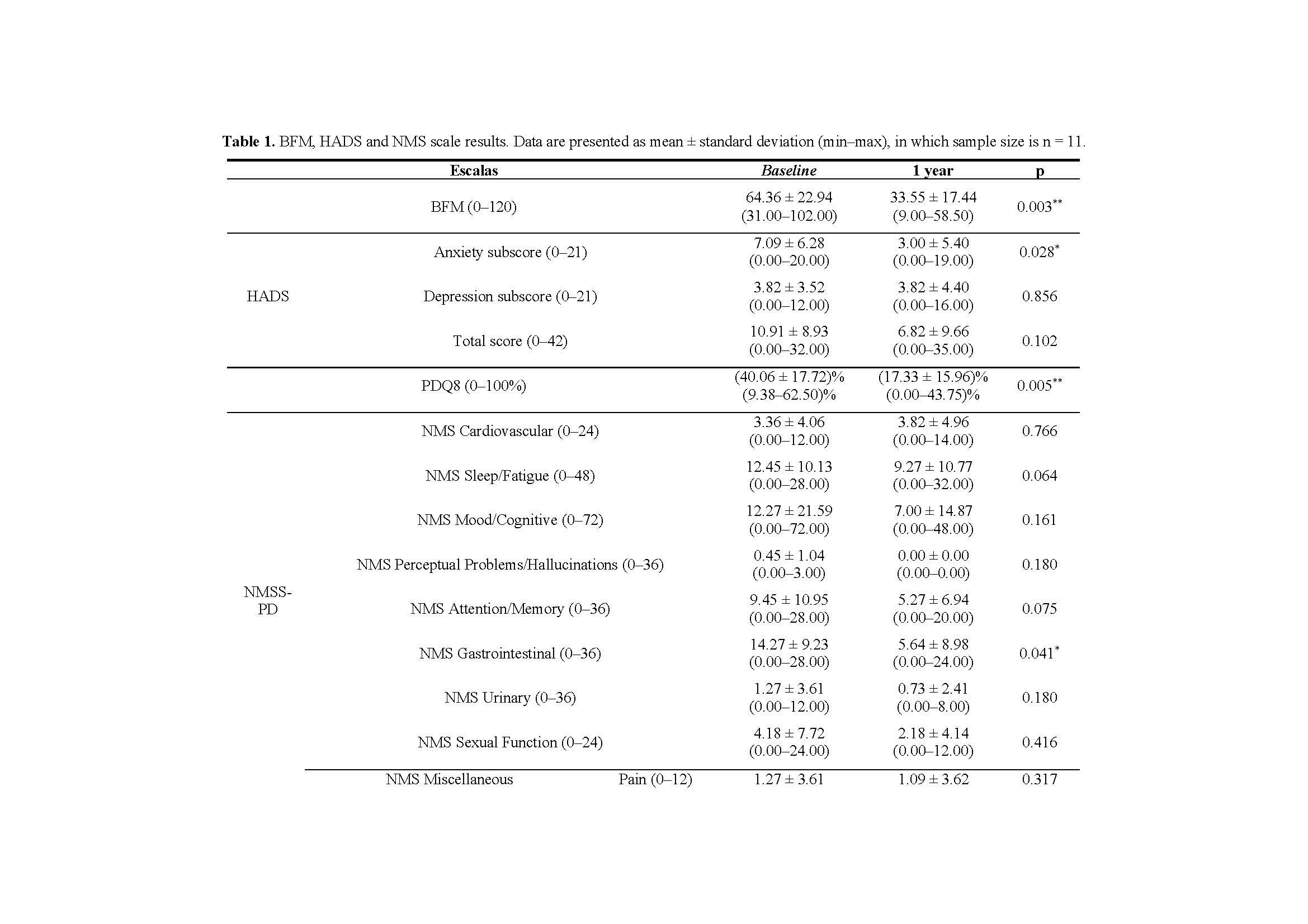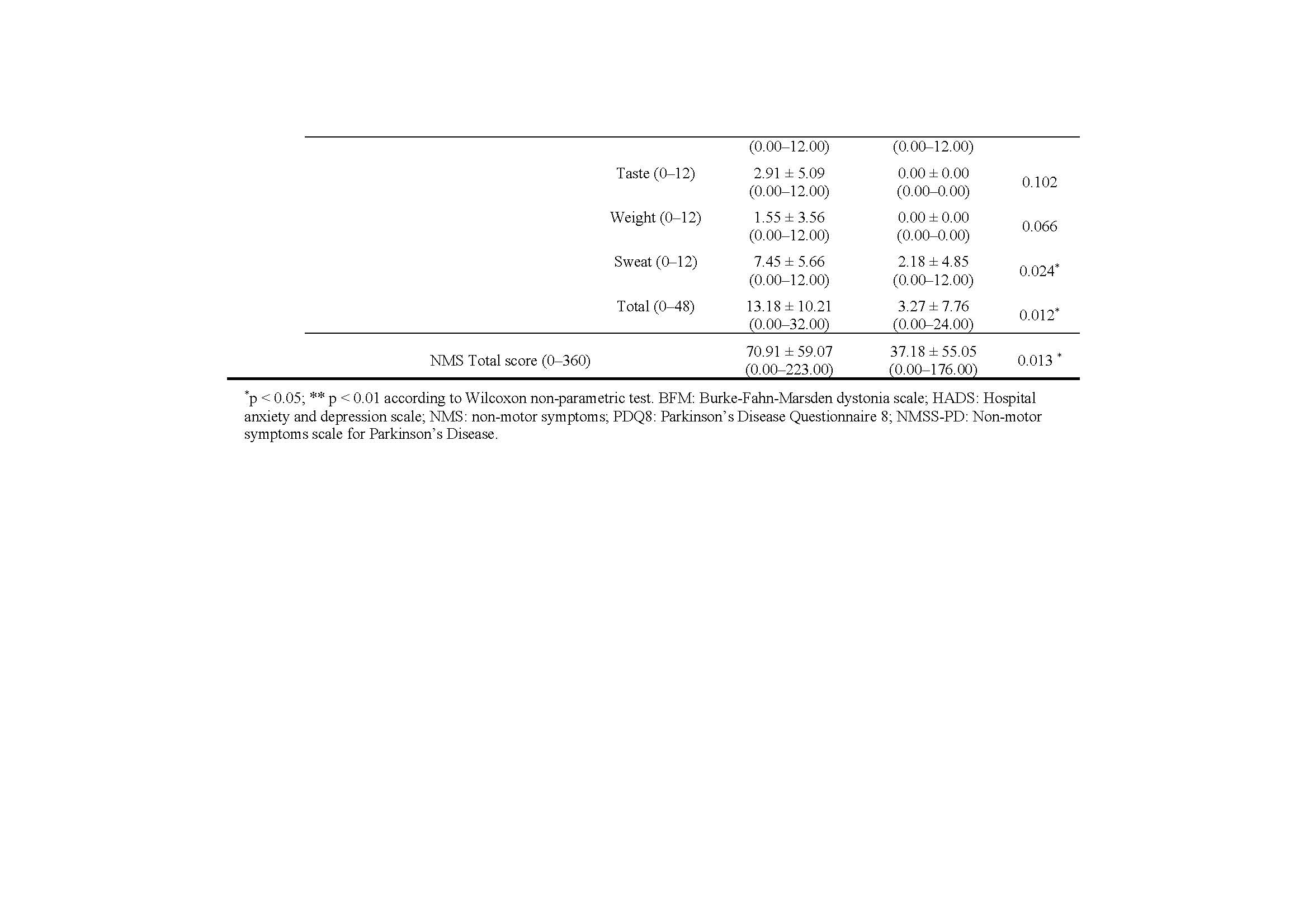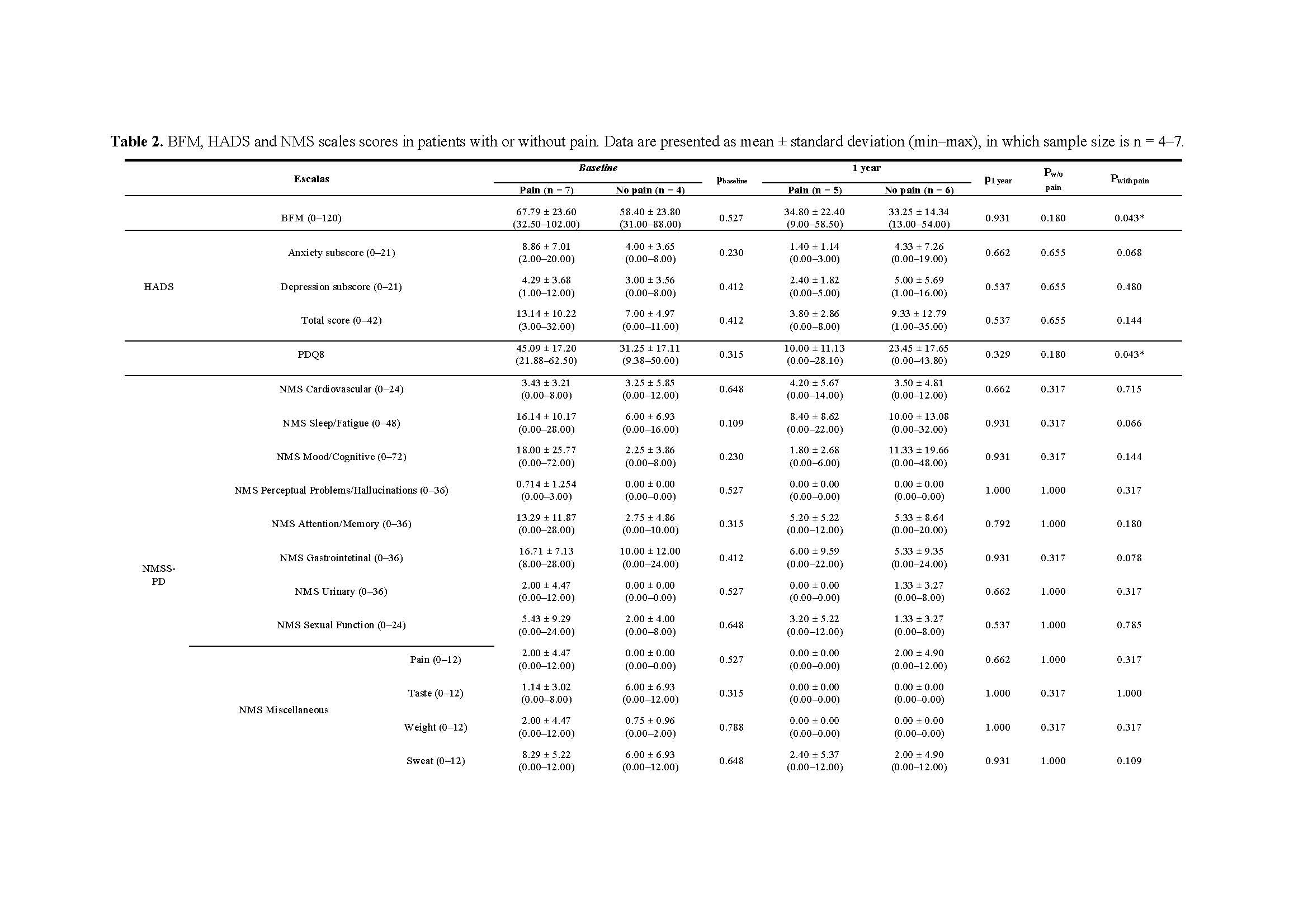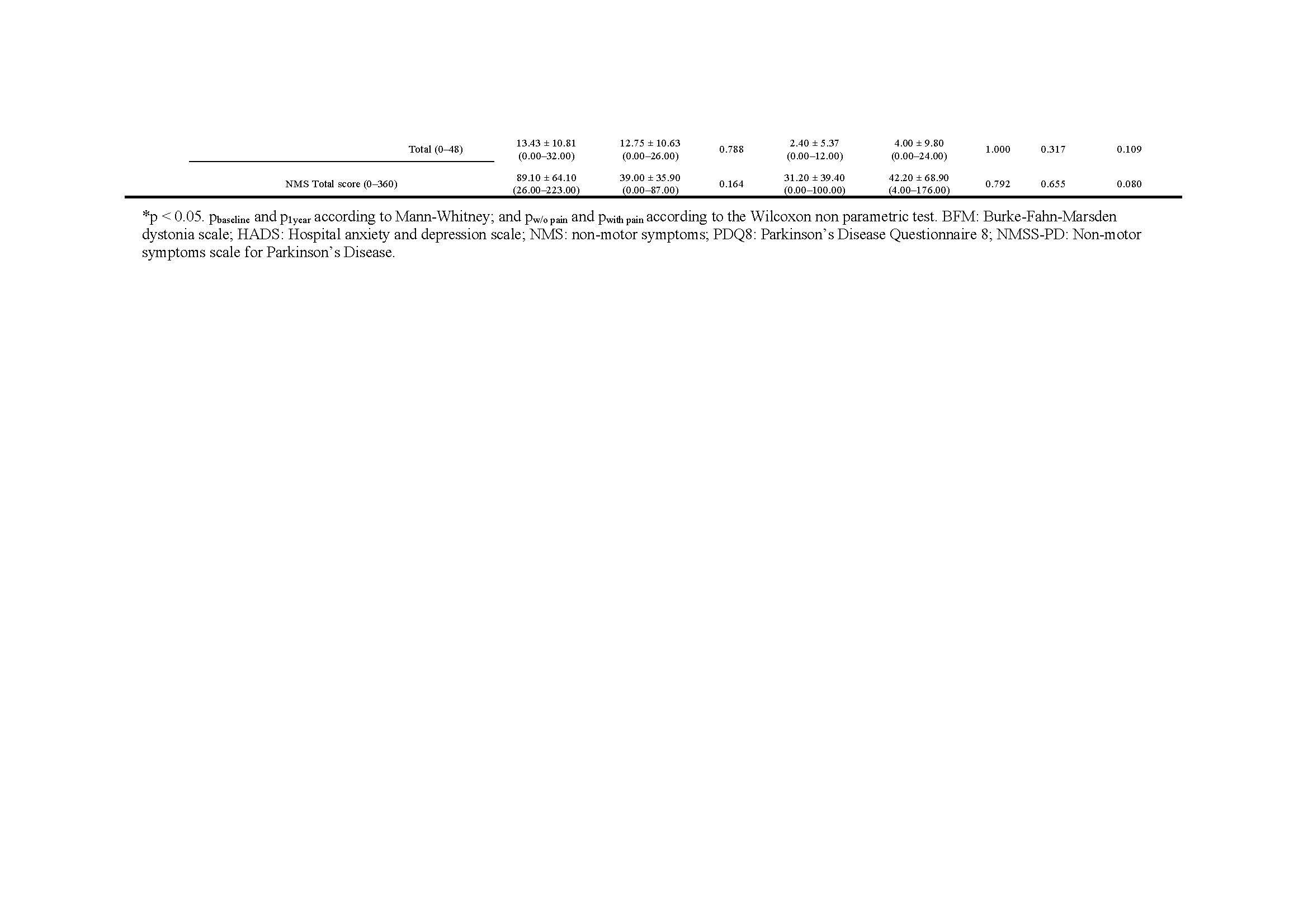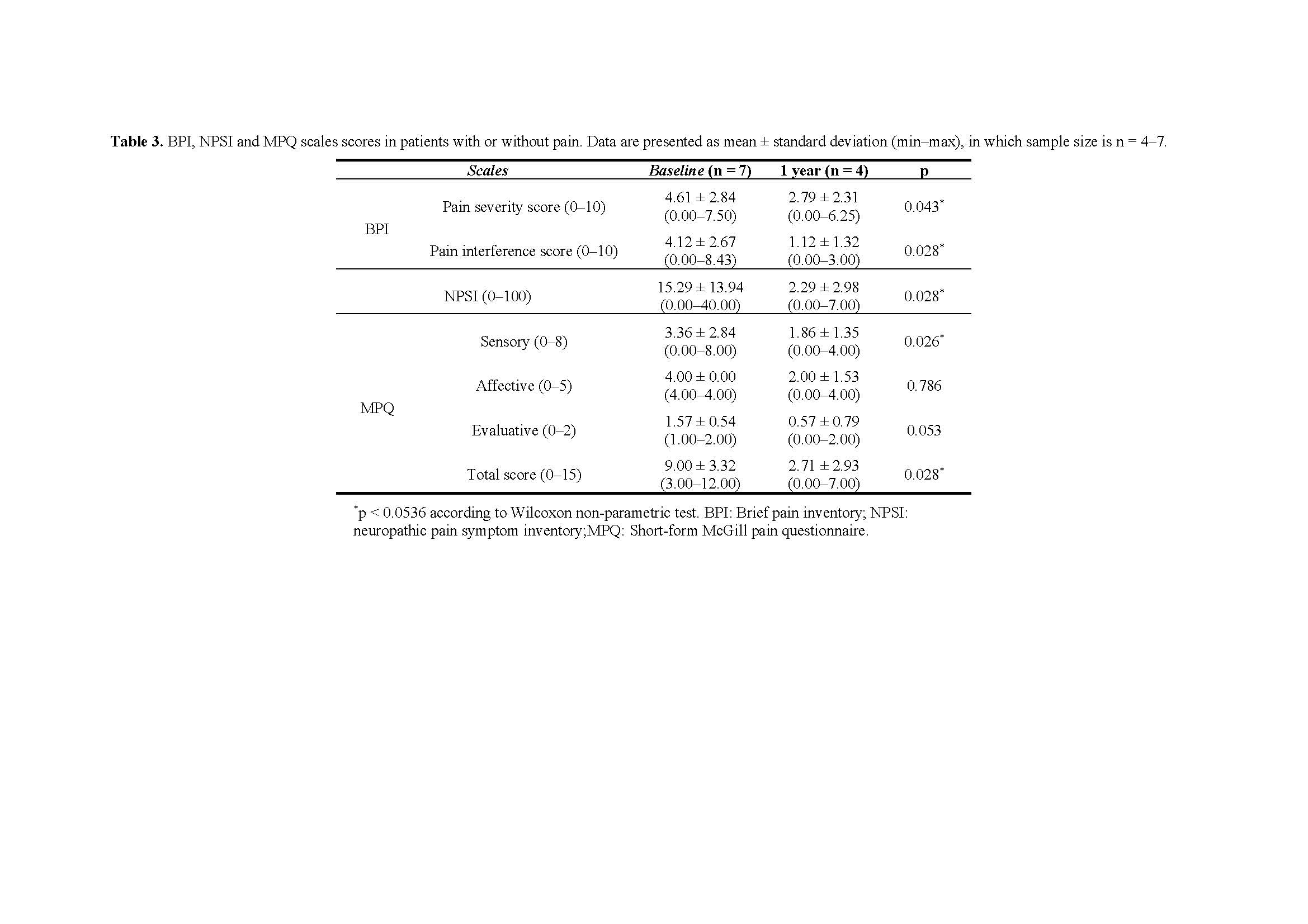Category: Dystonia: Clinical Trials and Therapy
Objective: To describe the non-motor symptoms (NMS) after Deep Brain Stimulation (DBS) surgery for refractory generalized inherited/idiopathic dystonia in a prospective study.
Background: DBS is an established treatment option in refractory dystonia, and motor outcomes have been extensively evaluated instead of the usually neglected NMS (e.g., pain).
Method: This is a prospective observational study that evaluated patients before and one year after DBS surgery. We applied the following scales: Burke-Fahn-Marsden (BFM) Scale, Hospital Anxiety and Depression Scale (HADS), Non-Motor Symptoms Scale for Parkinson’s Disease (NMSS-PD), Parkinson’s Disease Questionnaire-8 (PDQ8) short-form Brief Pain Inventory (BPI), Neuropathic Pain Symptom Inventory (NPSI), and Short-form McGill pain questionnaire (MPQ).
Results: Eleven patients (38.35 ± 11.30 years) underwent surgery, all with generalized dystonia (36.3% were women). Eight patients had GPi, one STN, and two STN-SN as DBS targets. Motor BFM subscore was 64.36 ± 22.94 at baseline and 33.55 ± 17.44 one year after DBS surgery (p = 0.003, a 47.9% improvement on motor symptoms related to dystonia) – Figure 1. Total HADS scores remained unchanged during the evaluated period. Total NMSS-PD had a significant change 12 months after DBS, from 70.91 ± 59.07 to 37.18 ± 55.05 (p = 0.013, a 47,5% improvement). Interestingly, this was mainly driven by changes in the gastrointestinal (p = 0.041) and miscellaneous domains of the scale (p = 0.012). Seven patients reported pain before DBS surgery, and after one year, just four patients reported chronic pain (i.e., pain improved by 42.28%). BPI’s severity and interference scores were 4.61 ± 2.84 and 4.12 ± 2.67, respectively before surgery, and 2.79 ± 2.31 (0.00–6.25) and 1.12 ± 1.32 (0.00–3.00) after DBS, reflecting a significant improvement to the baseline (p = 0.043 and p = 0.028). NPSI total score was 15.29 ± 13.94 before DBS, while it was reduced to 2.29 ± 2.98 afterward (p = 0.028). McGill’s total score was 9.00 ± 3.32 before DBS, achieving 2.71 ± 2.93 after surgery (p = 0.028), mostly driven by the sensory sub-score.
Conclusion: We found that DBS improves NMS in generalized inherited/idiopathic dystonia, including chronic pain, anxiety, gastrointestinal and miscellaneous symptoms, besides the already established improvement in QoL and motor symptoms.
To cite this abstract in AMA style:
C. Listik, R. Cury, S. Casagrande, E. Listik, D. Arnaut, N. Santiago, J. Machado, J. de Almeida, E. Barbosa, M. Teixeira, D. de Andrade. Improvement of non-motor symptoms and quality of life after DBS stimulation for refractory dystonia: a one-year follow-up [abstract]. Mov Disord. 2021; 36 (suppl 1). https://www.mdsabstracts.org/abstract/improvement-of-non-motor-symptoms-and-quality-of-life-after-dbs-stimulation-for-refractory-dystonia-a-one-year-follow-up/. Accessed December 18, 2025.« Back to MDS Virtual Congress 2021
MDS Abstracts - https://www.mdsabstracts.org/abstract/improvement-of-non-motor-symptoms-and-quality-of-life-after-dbs-stimulation-for-refractory-dystonia-a-one-year-follow-up/

